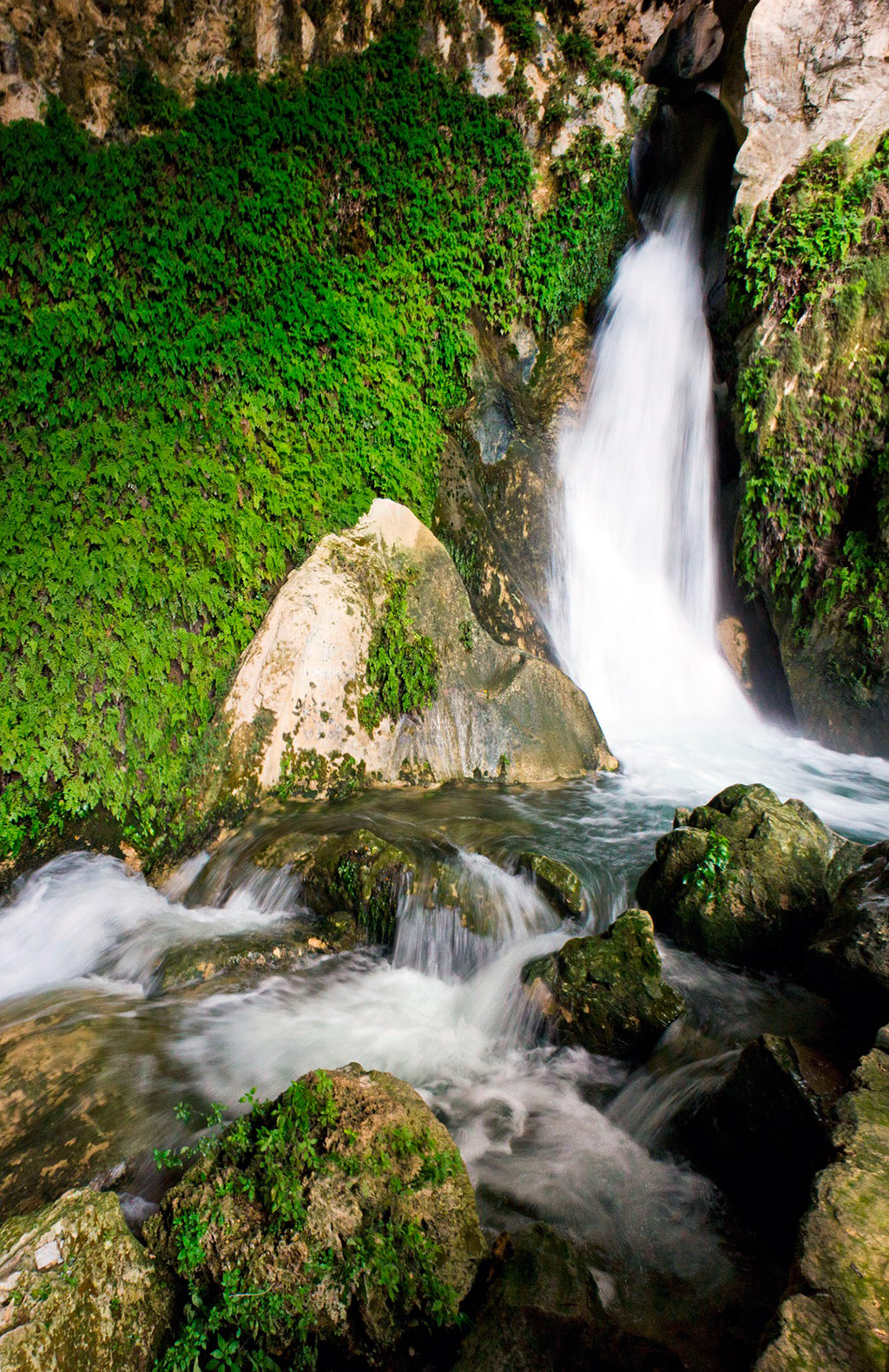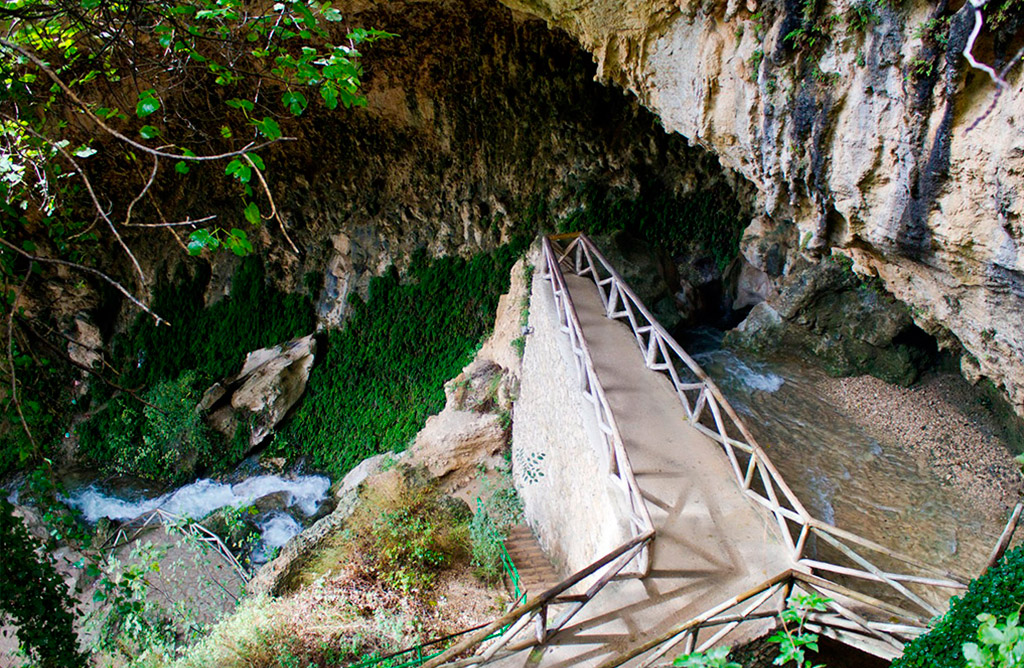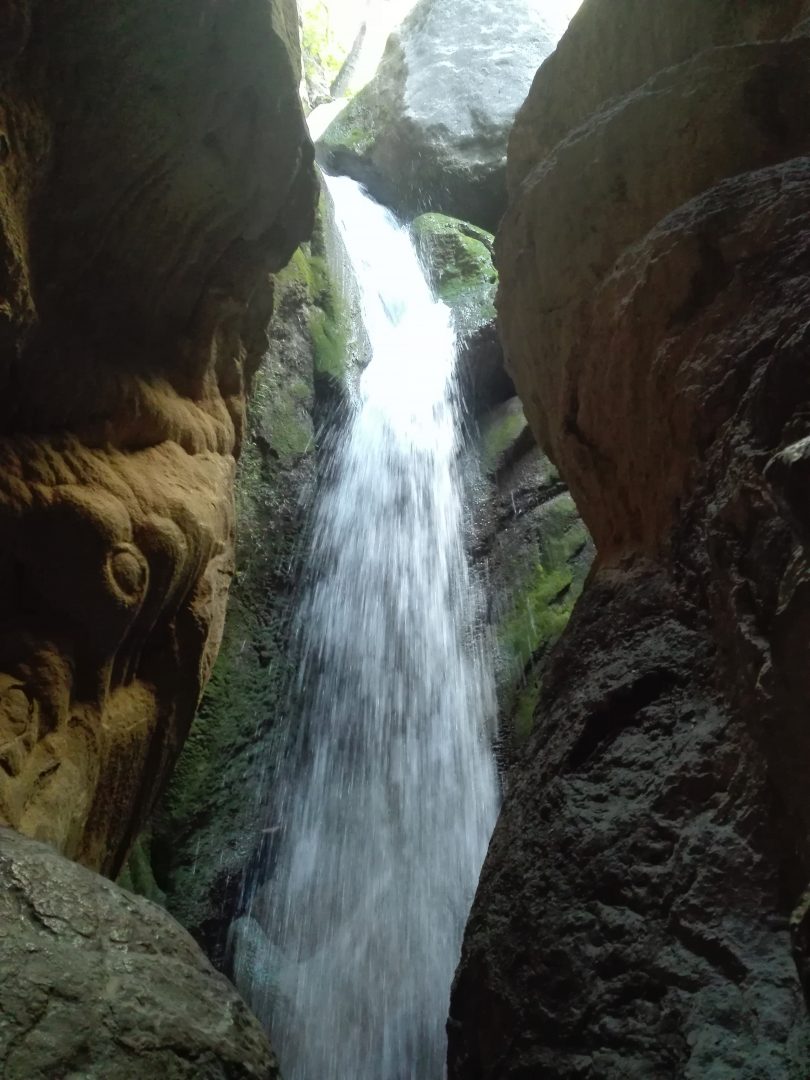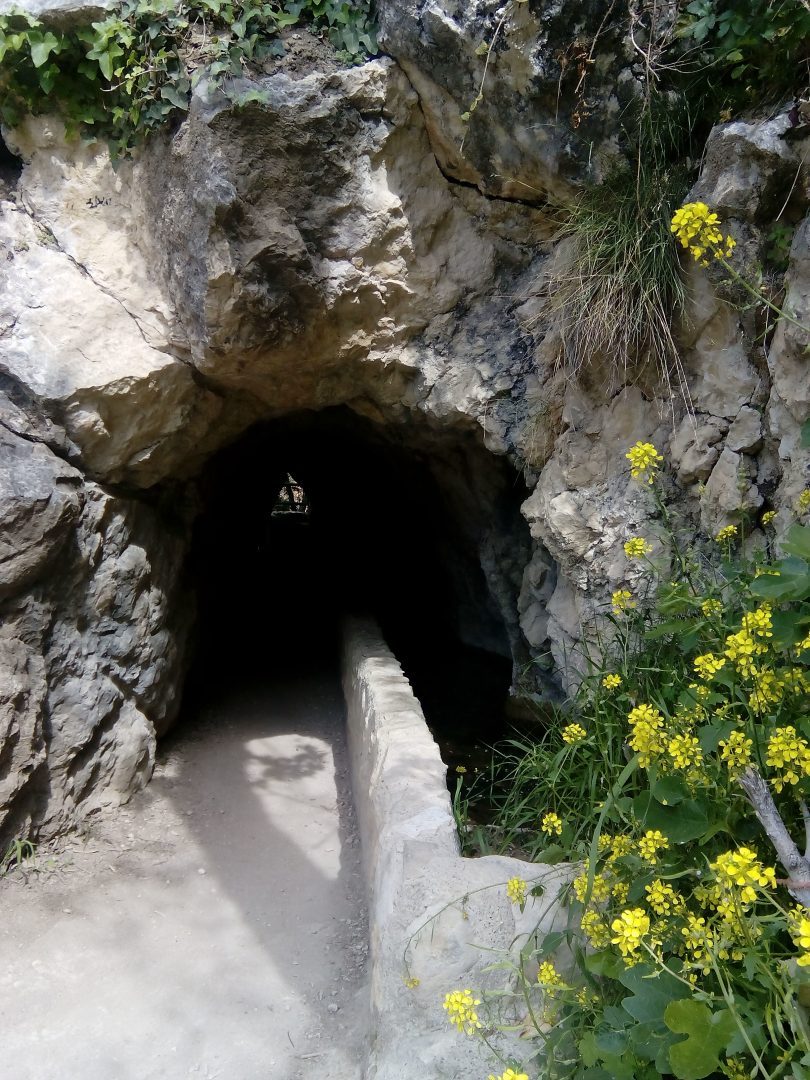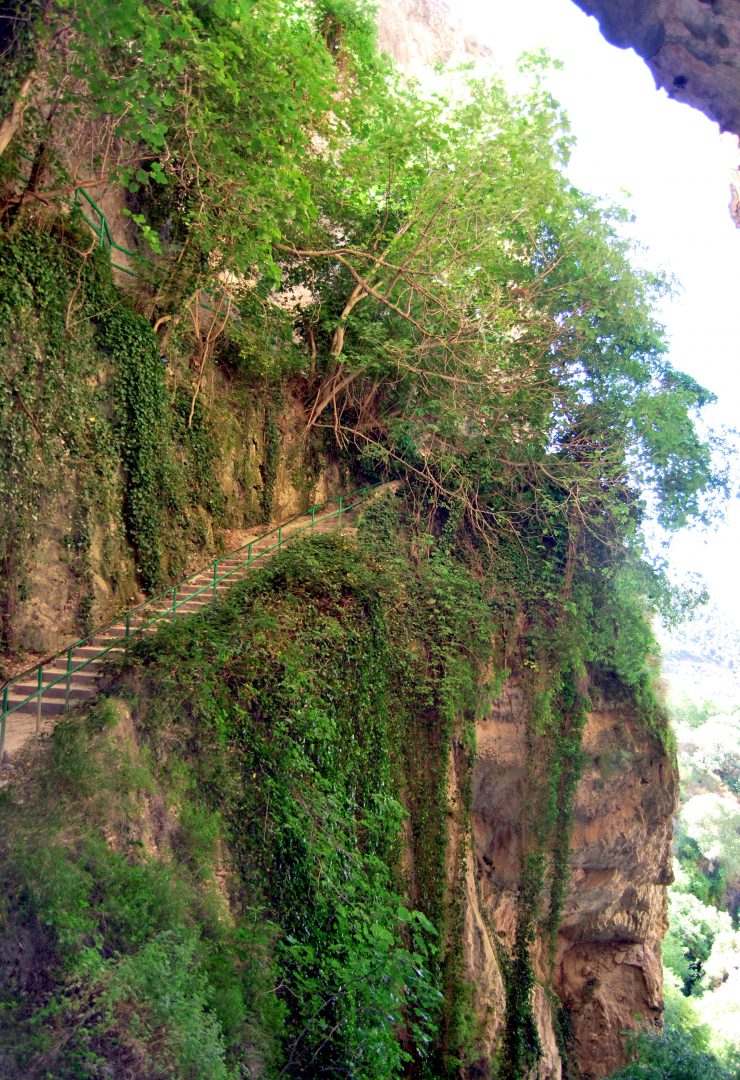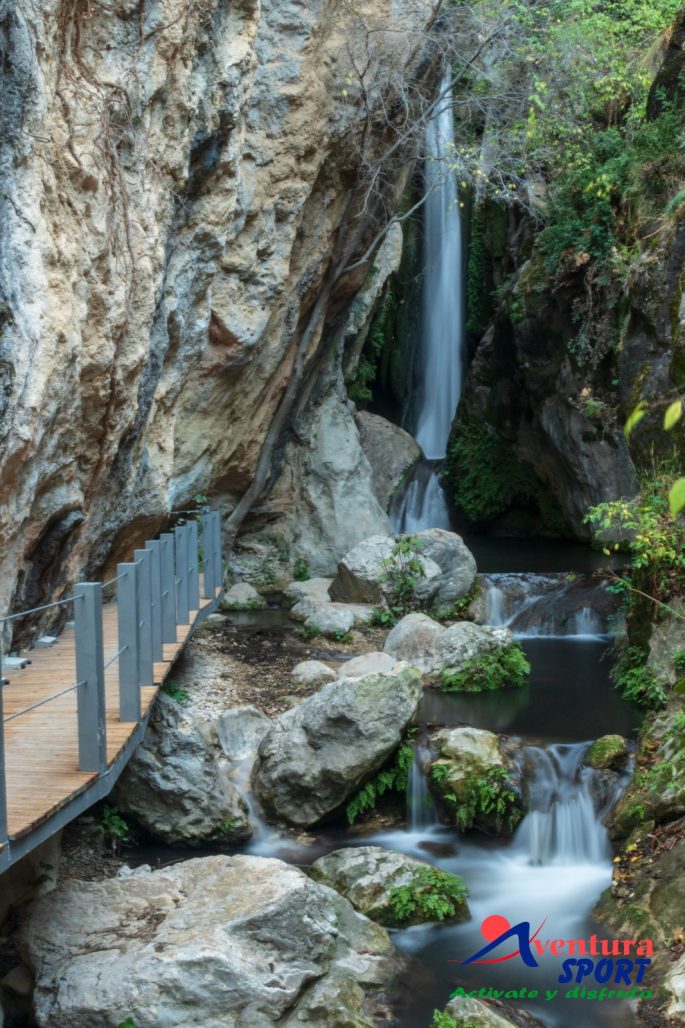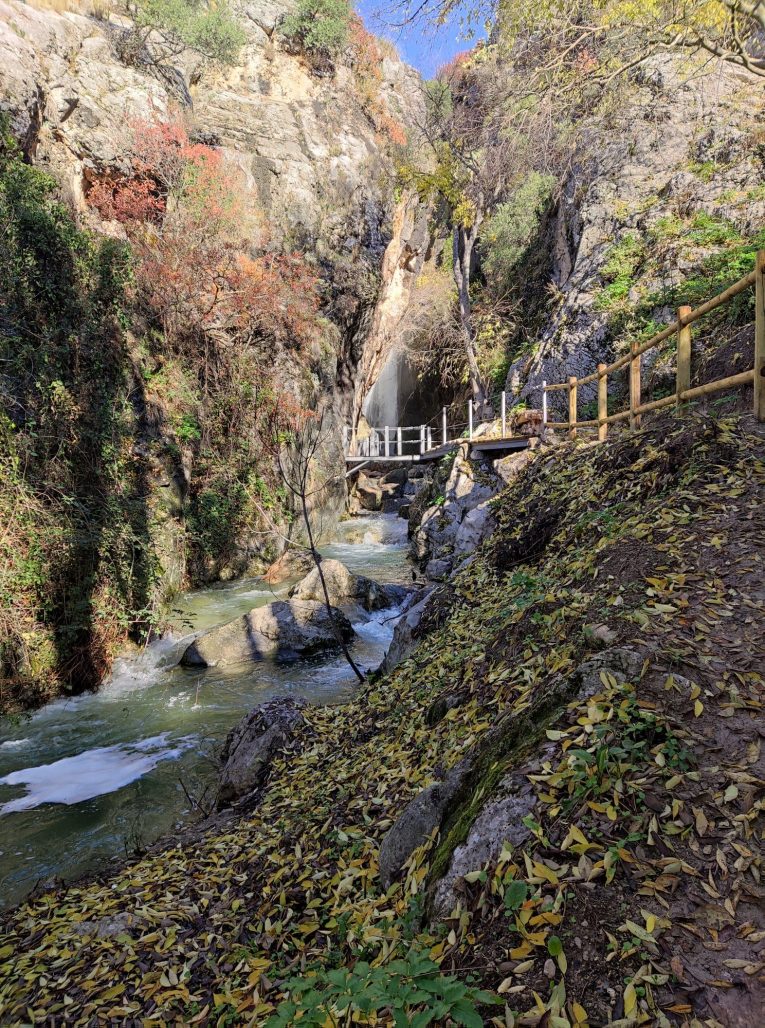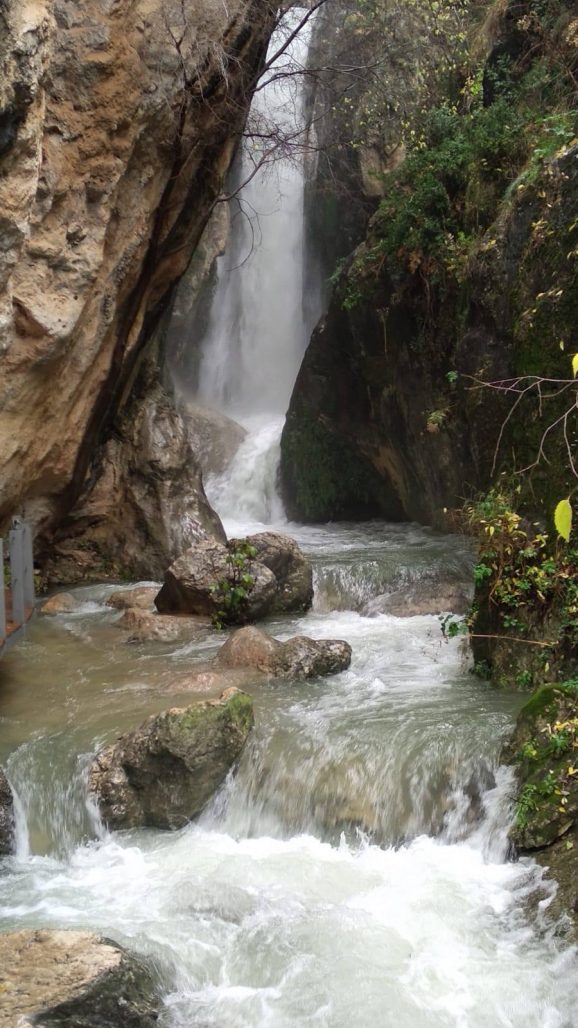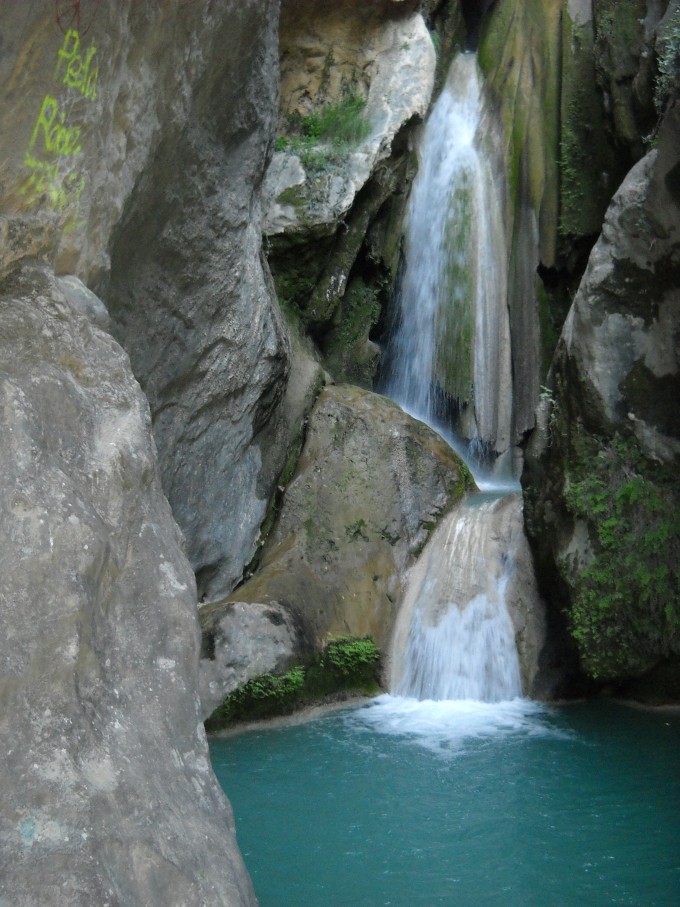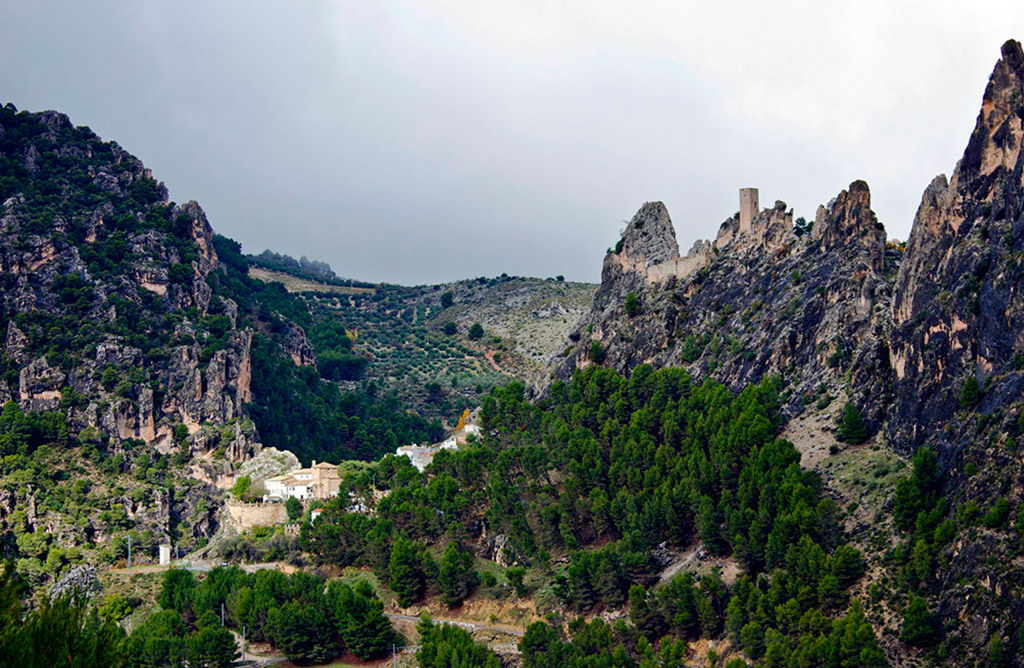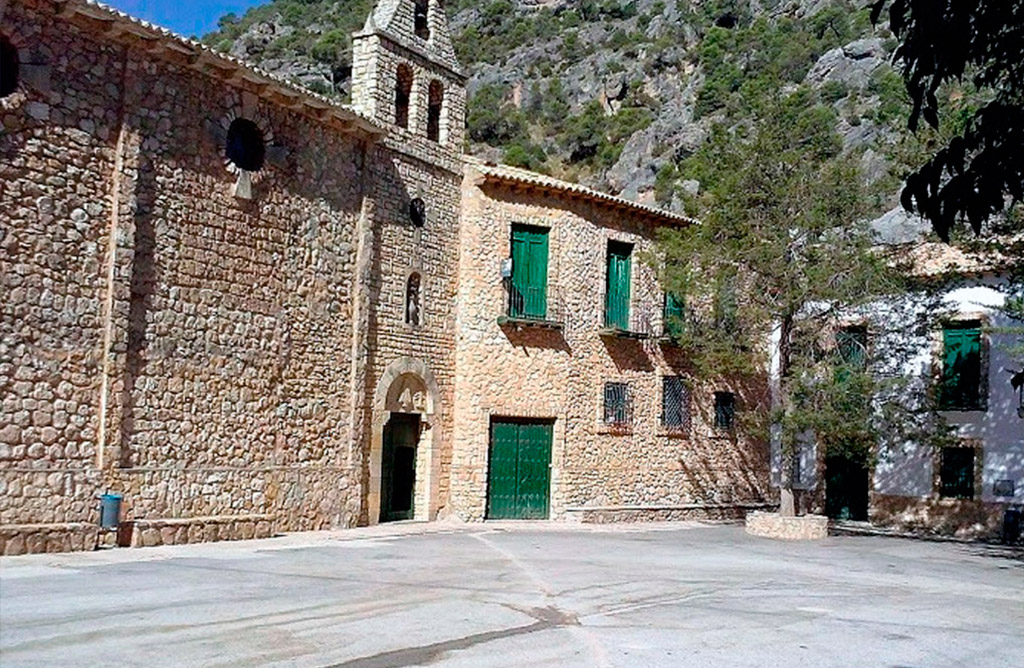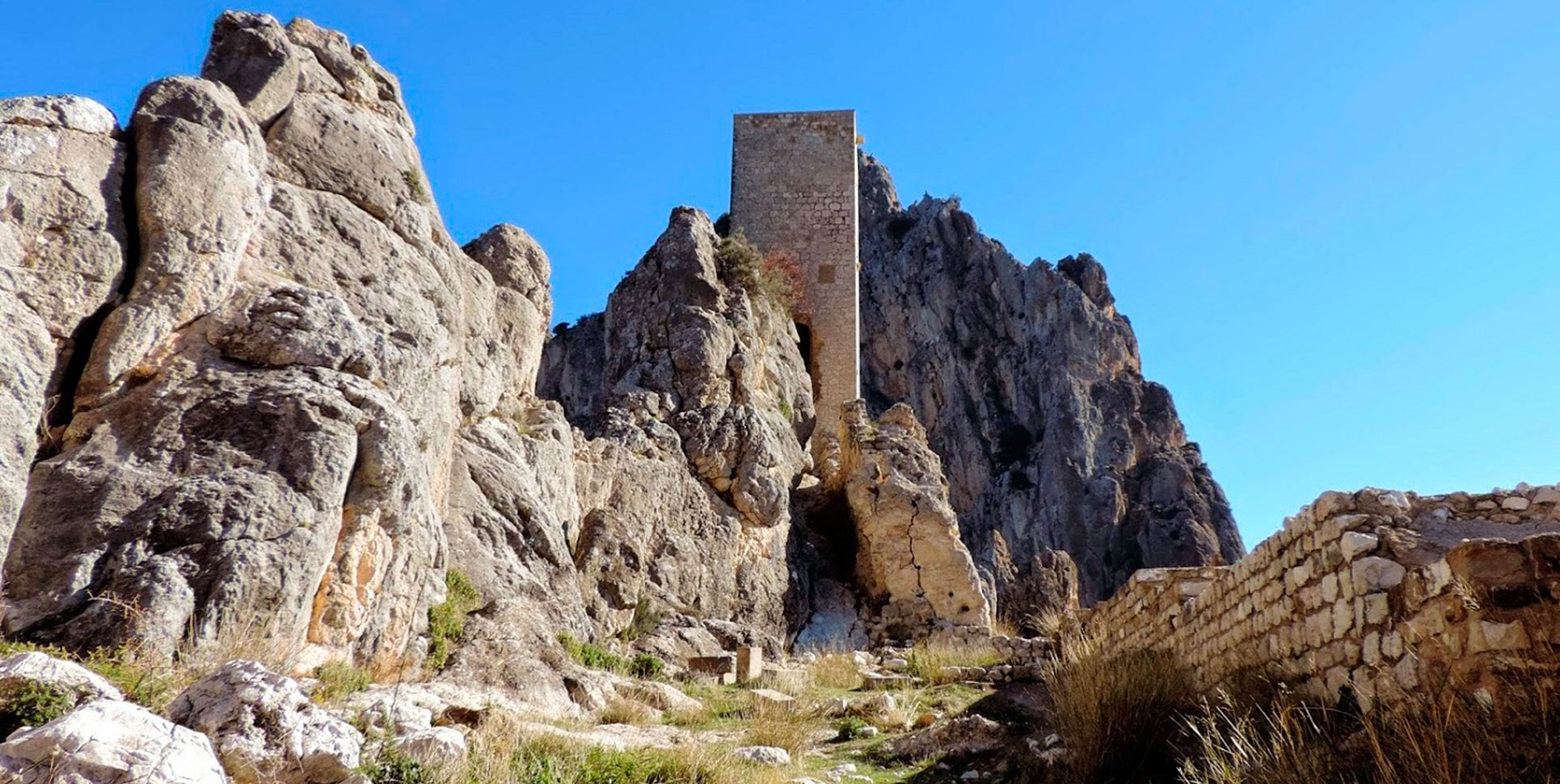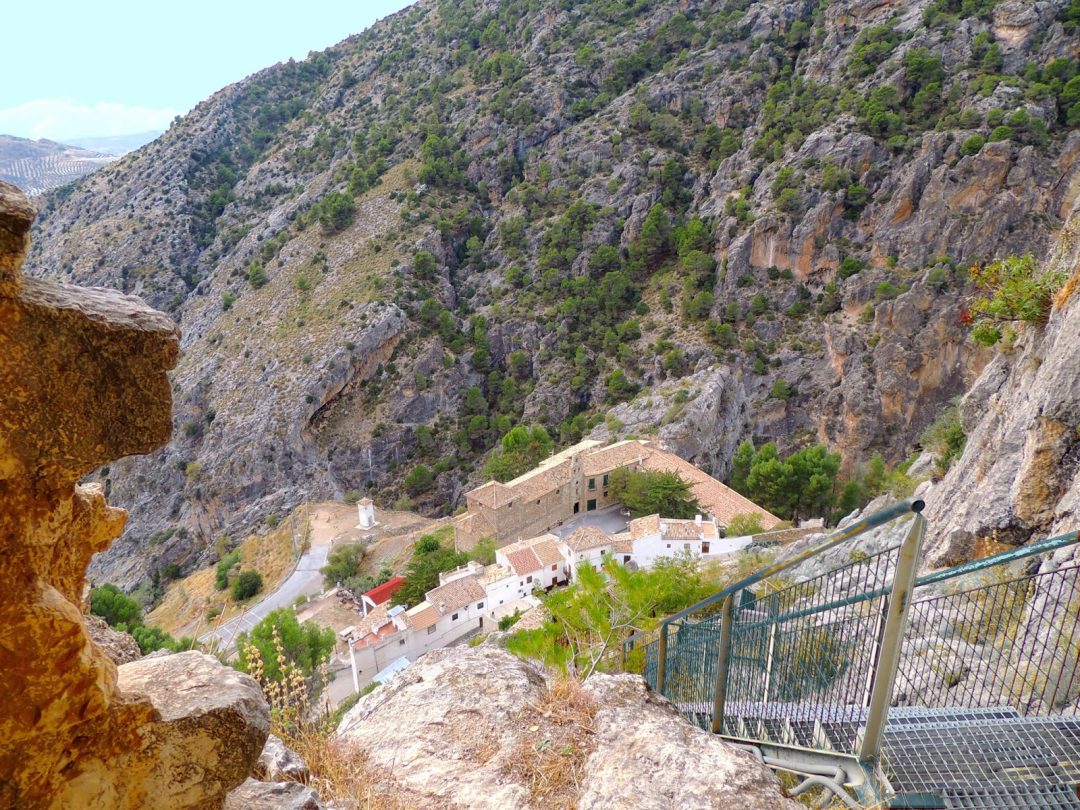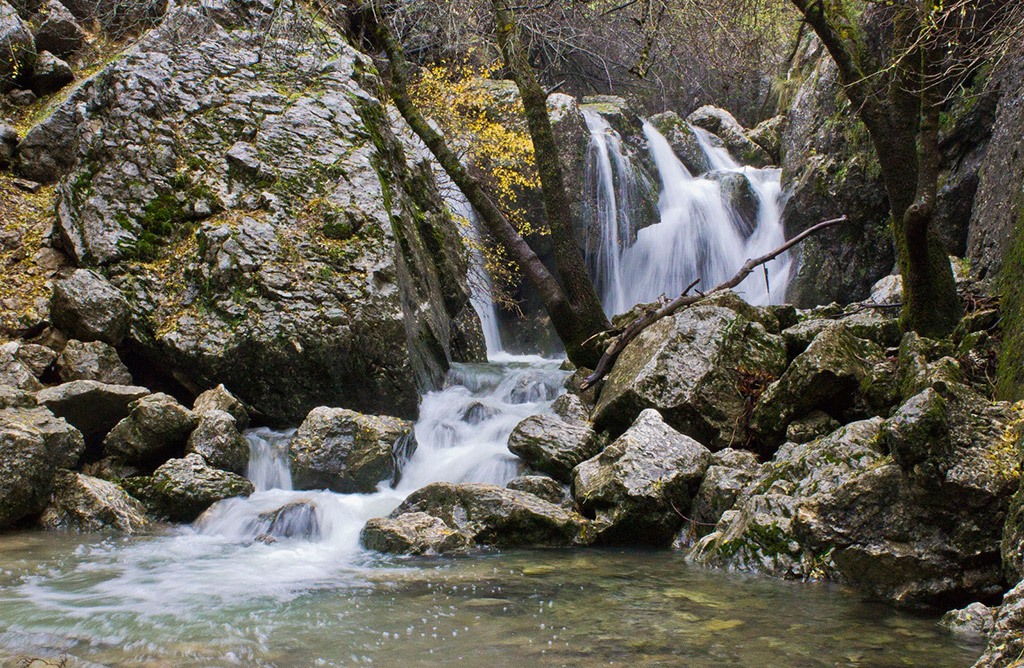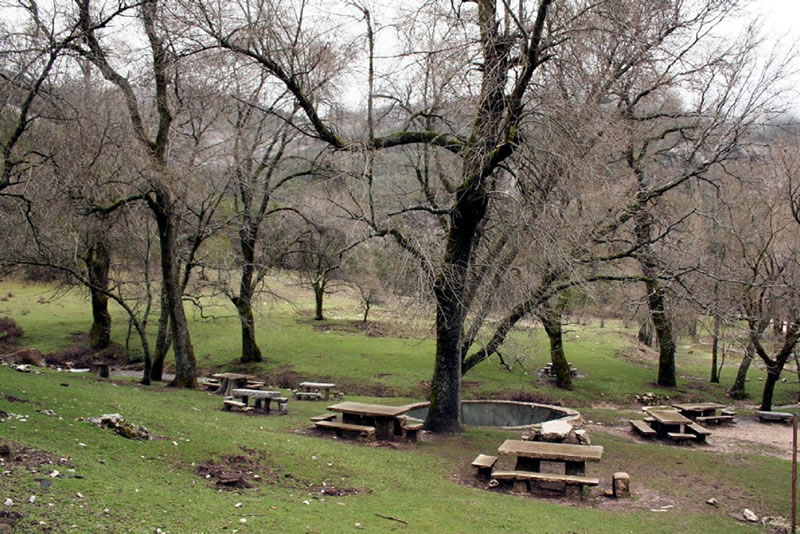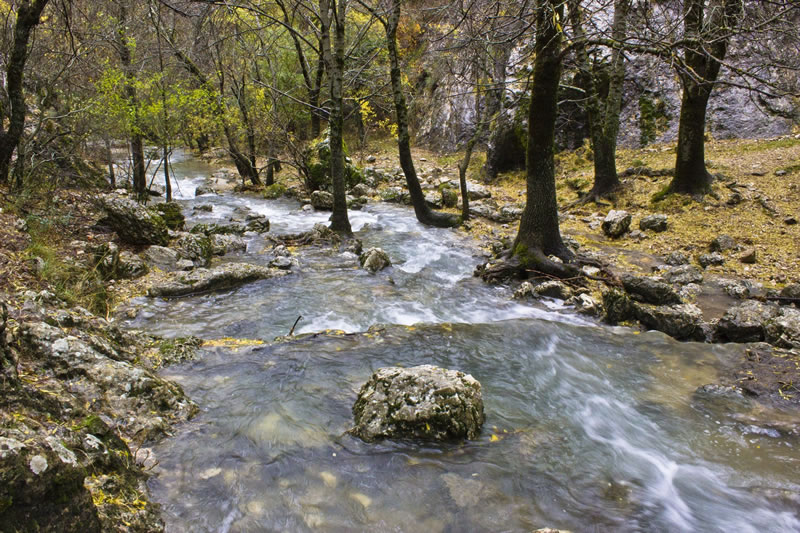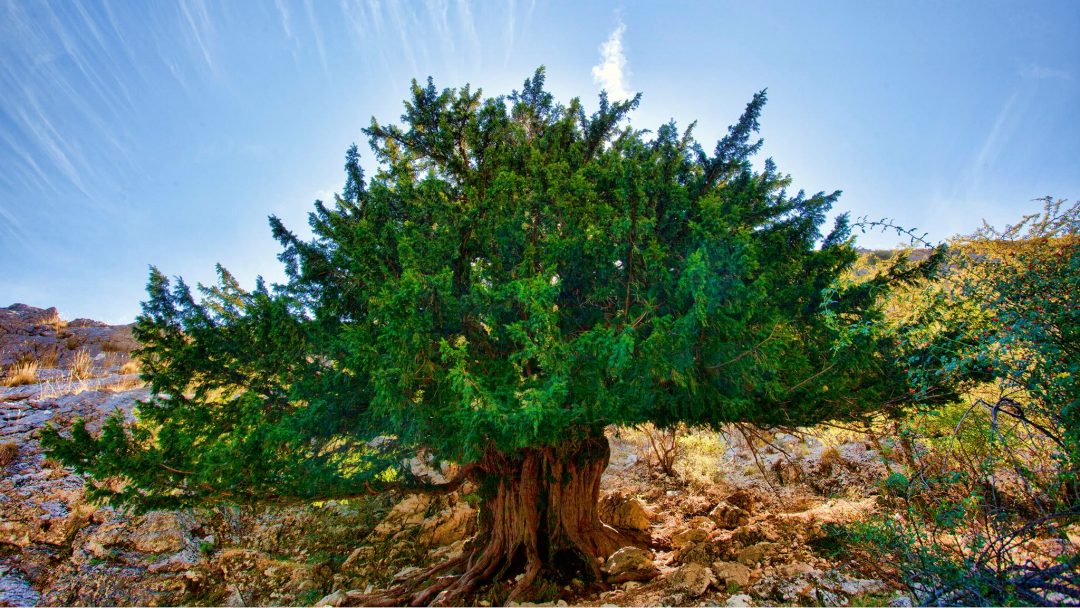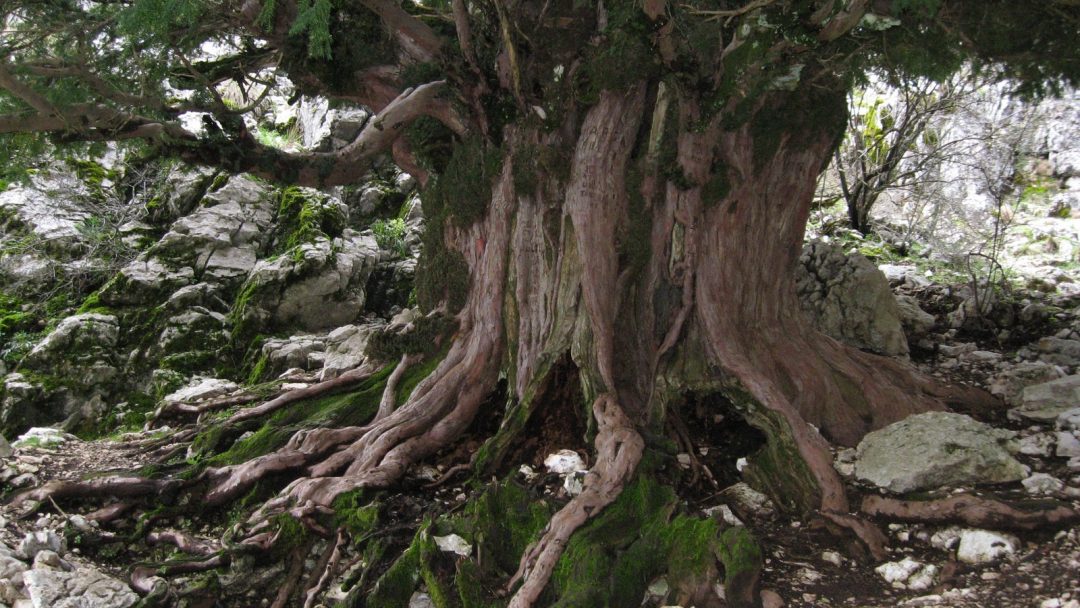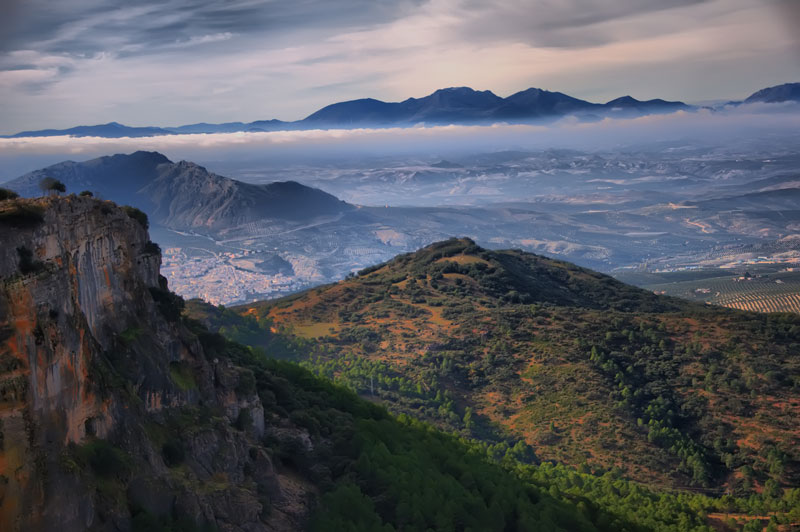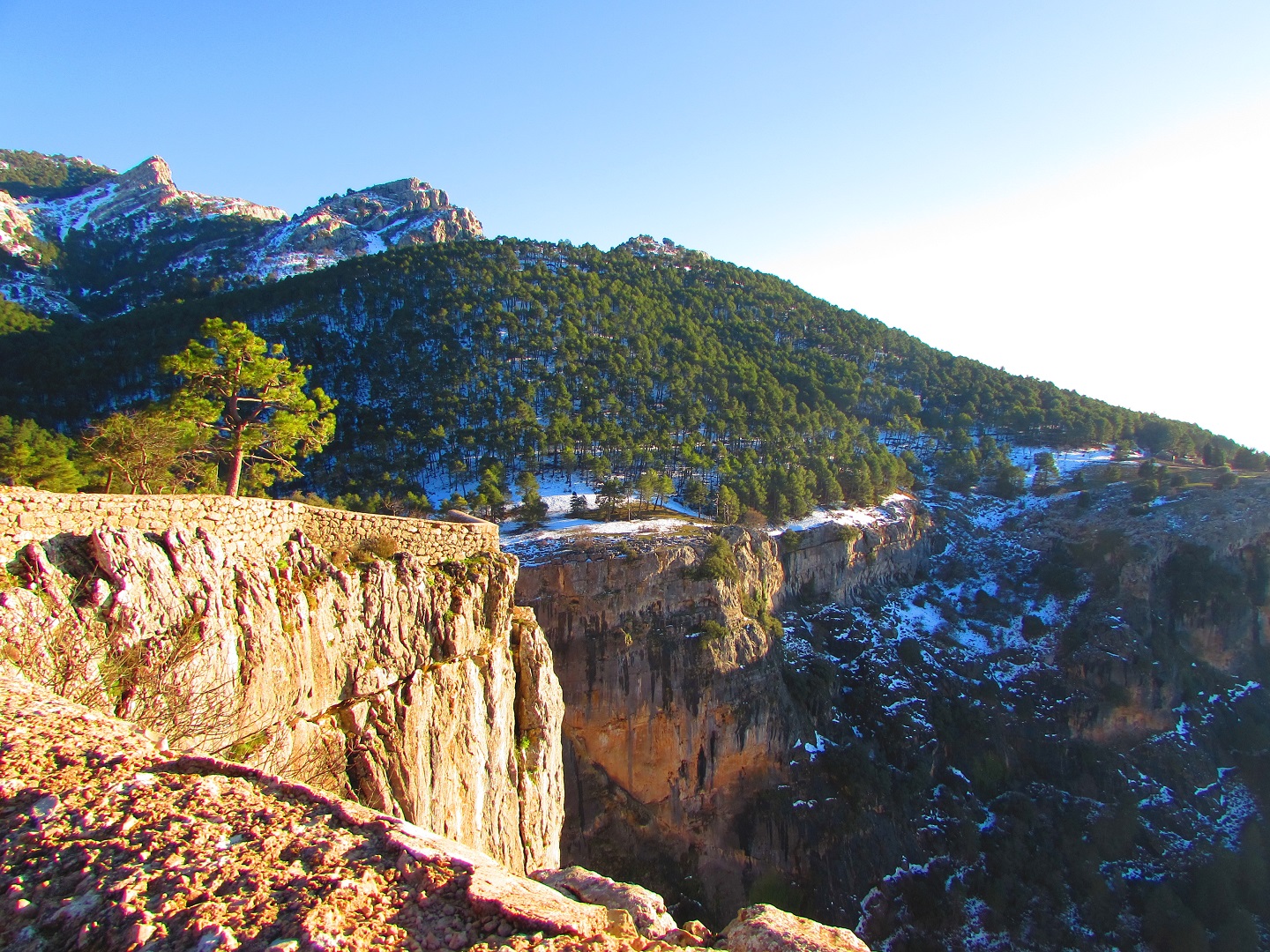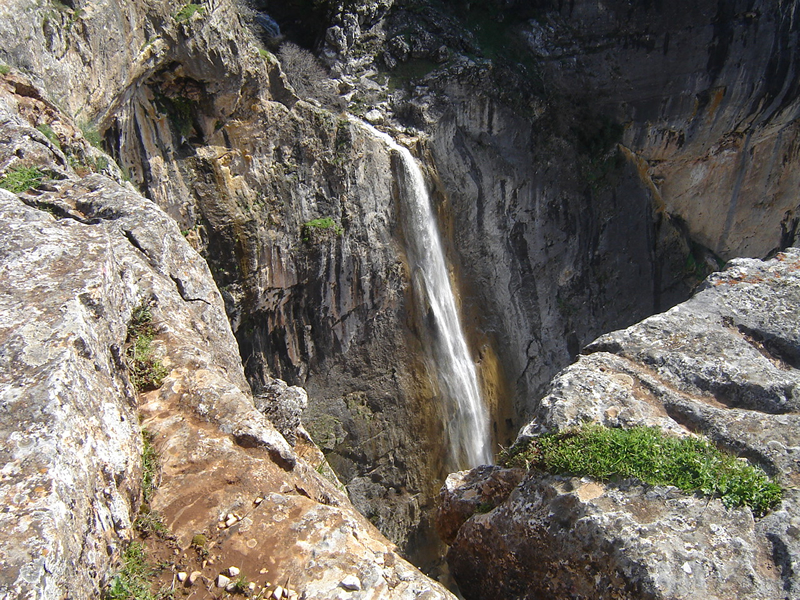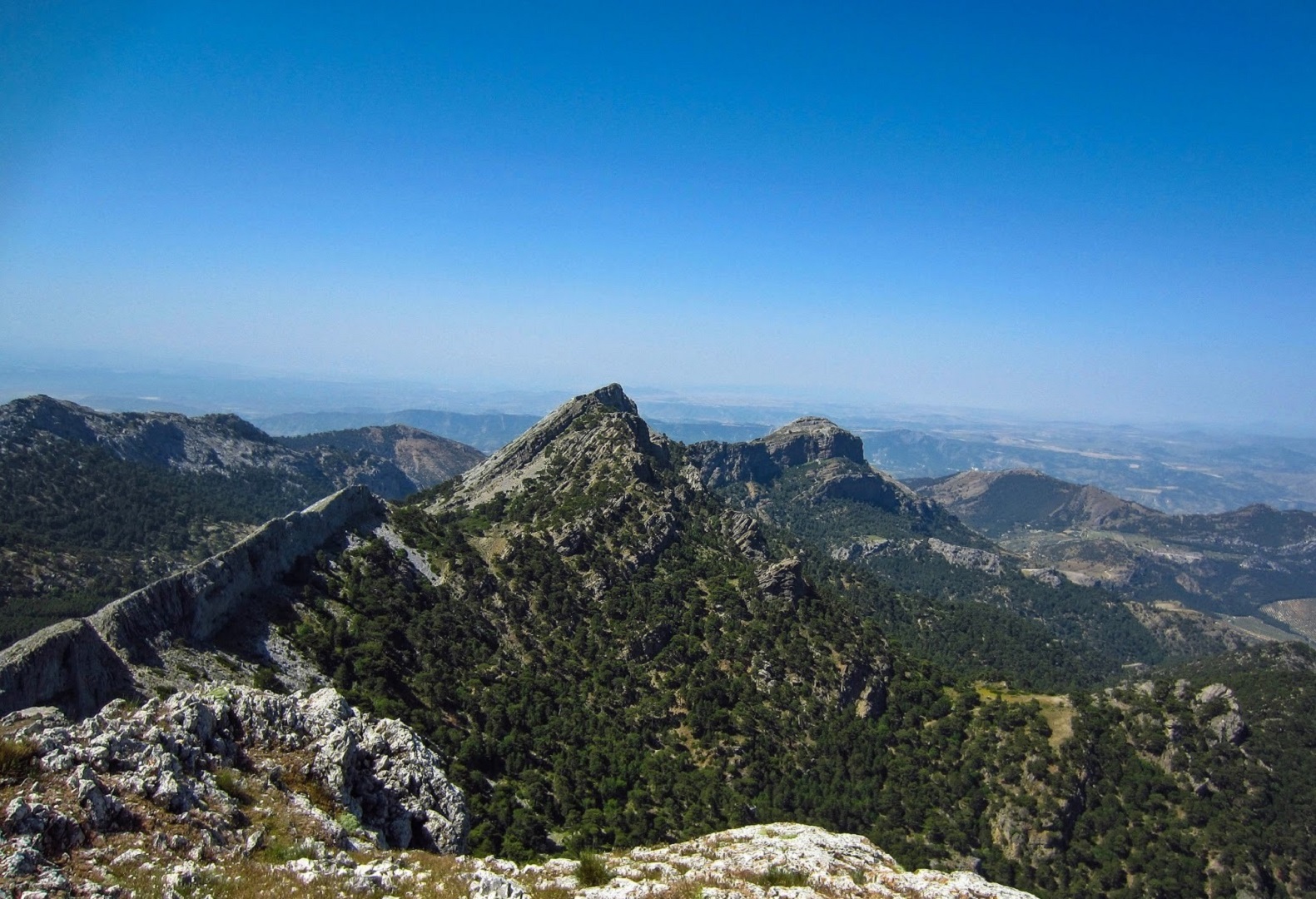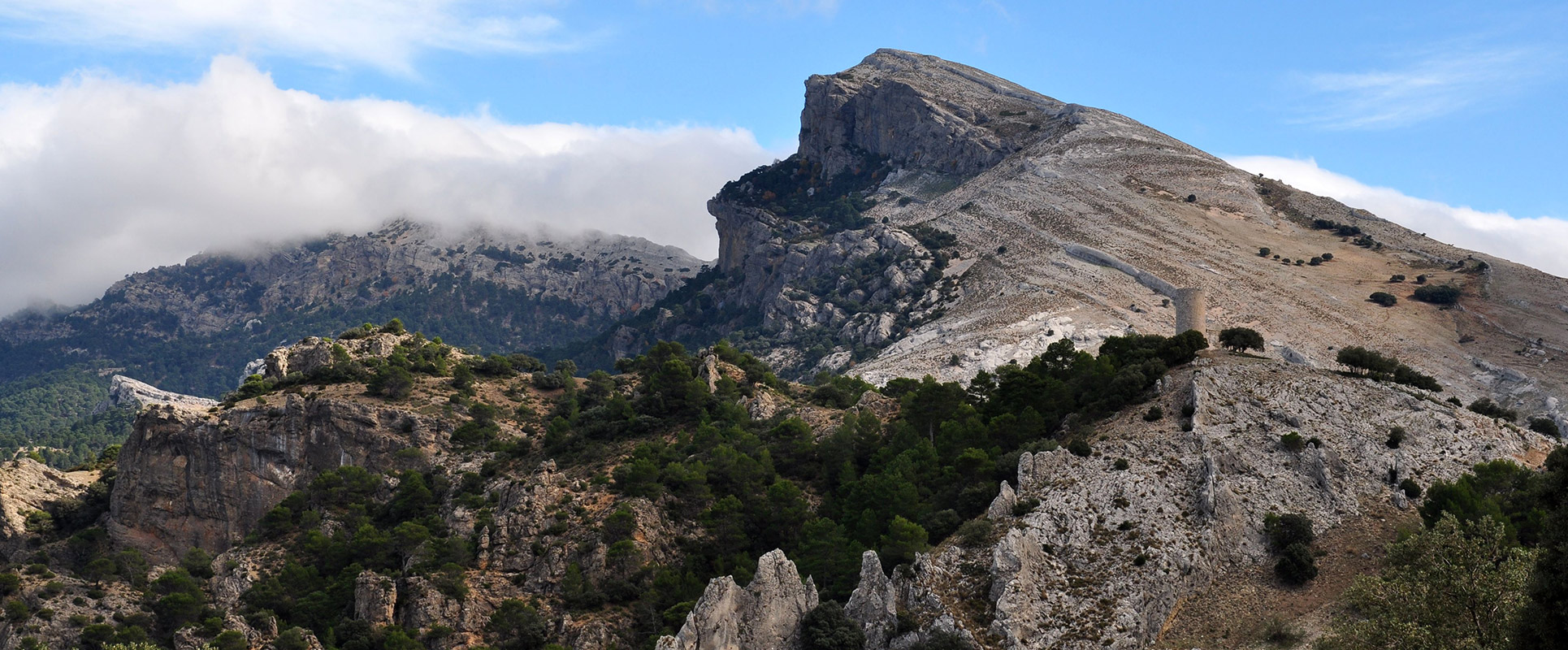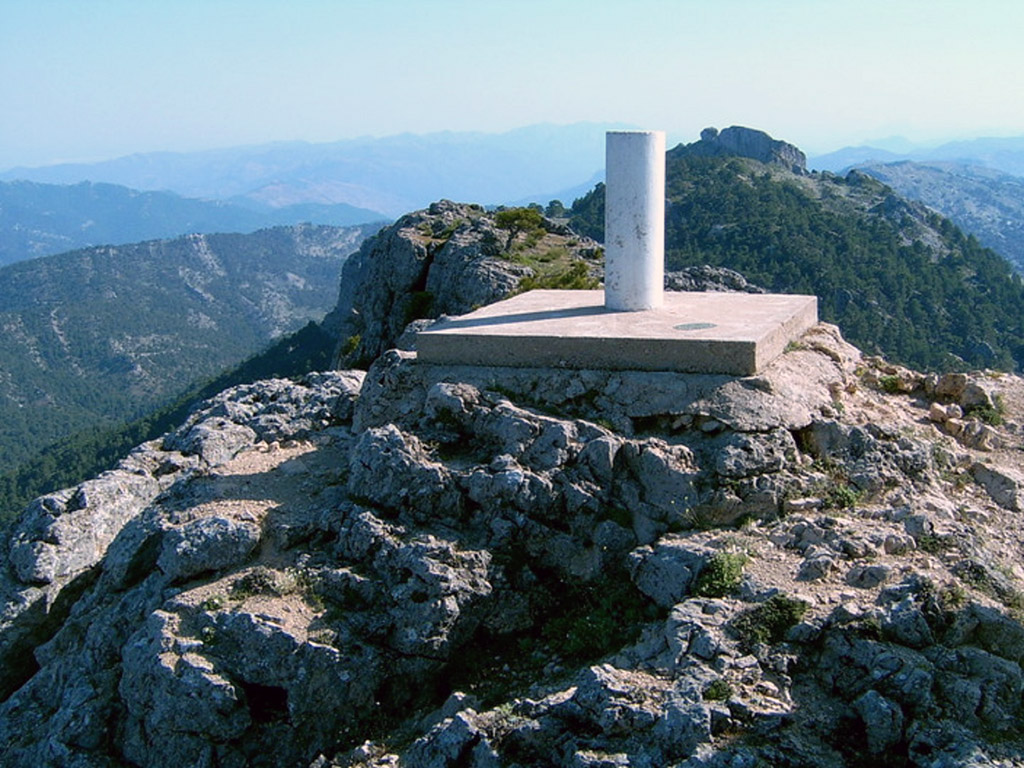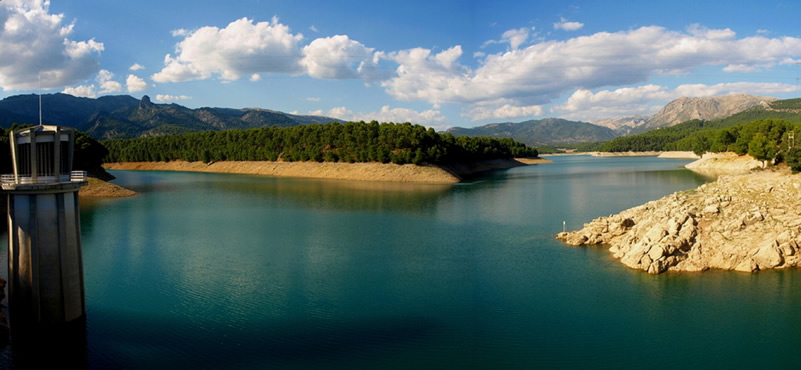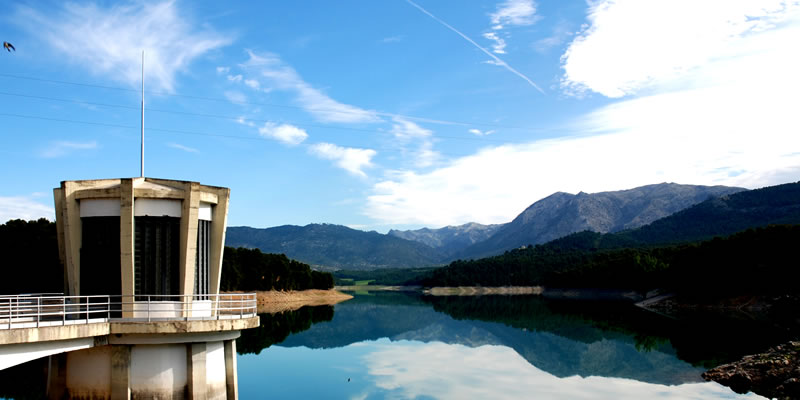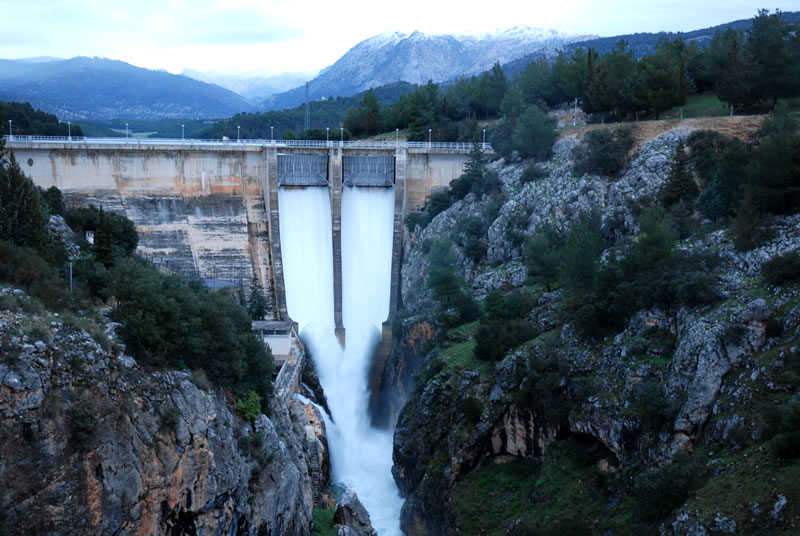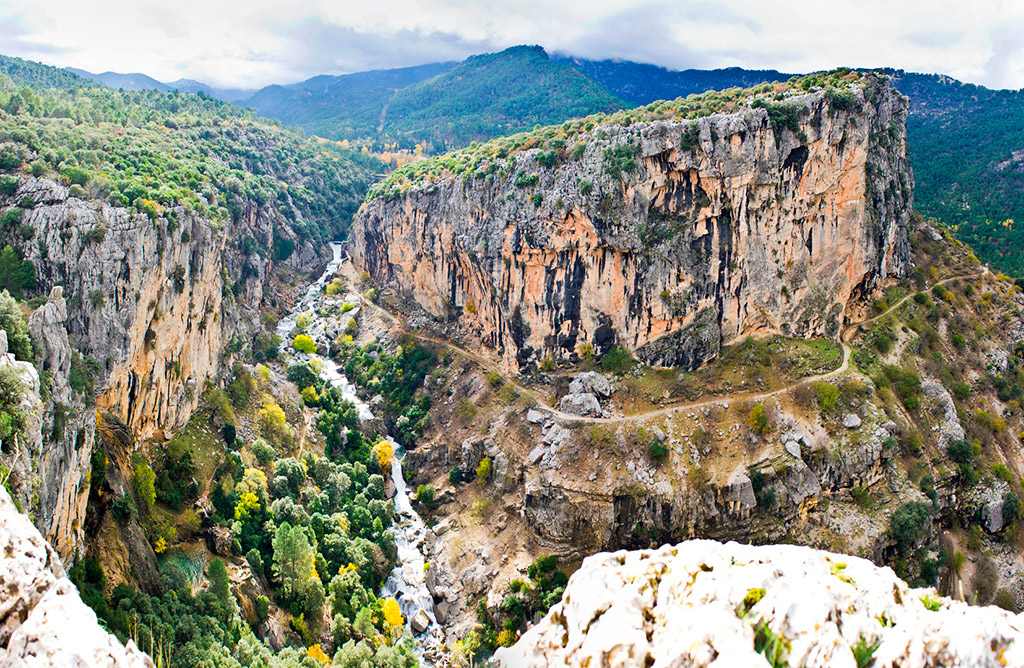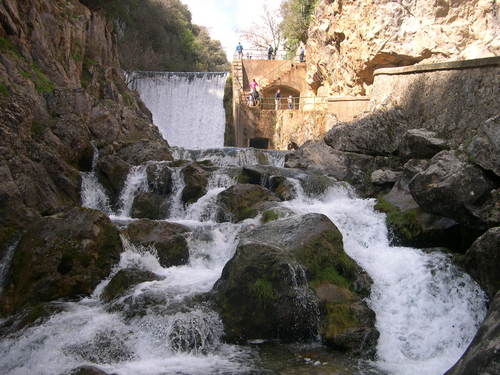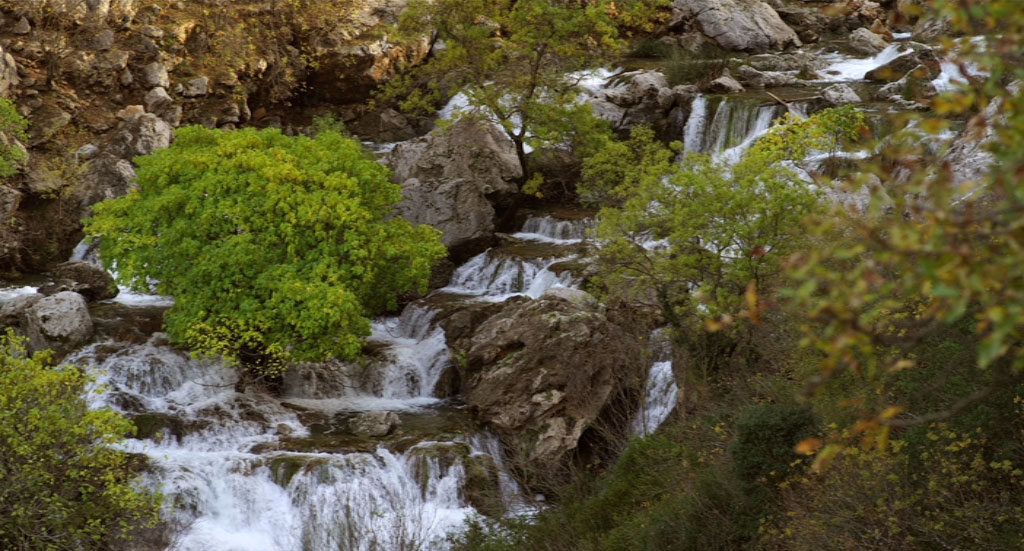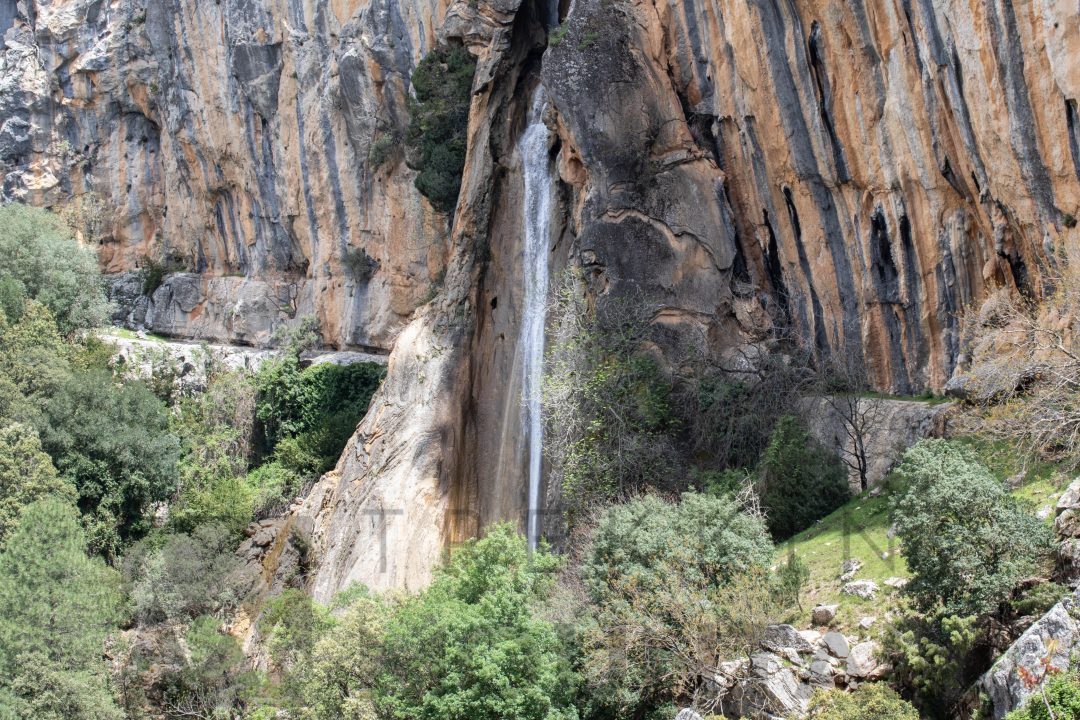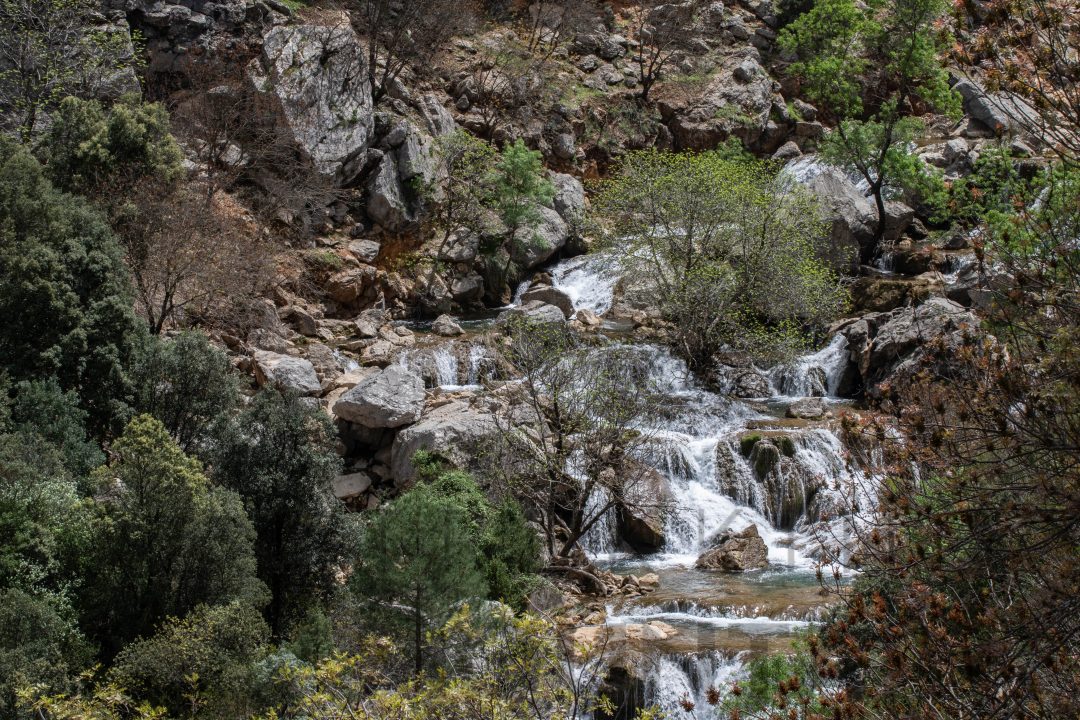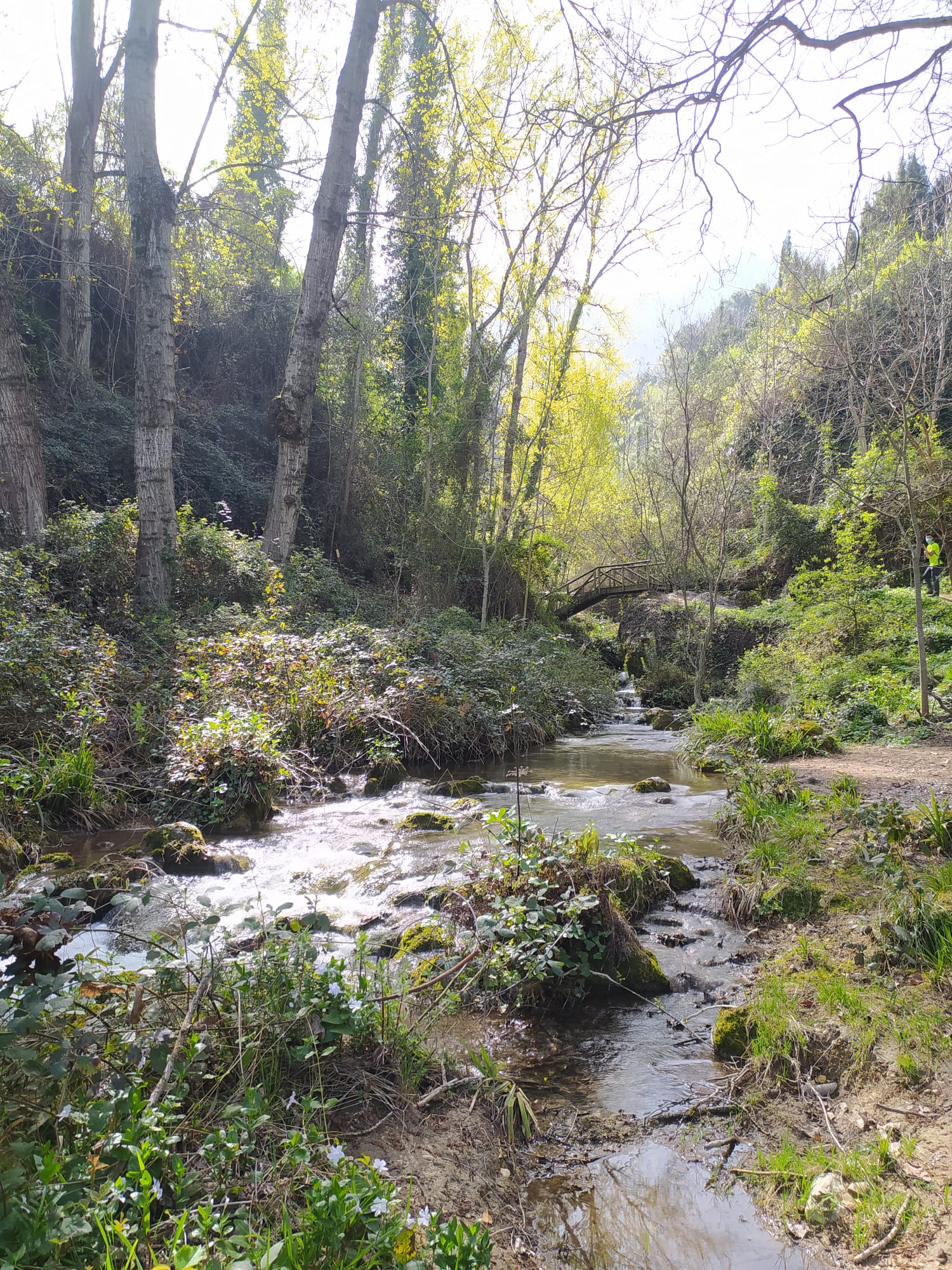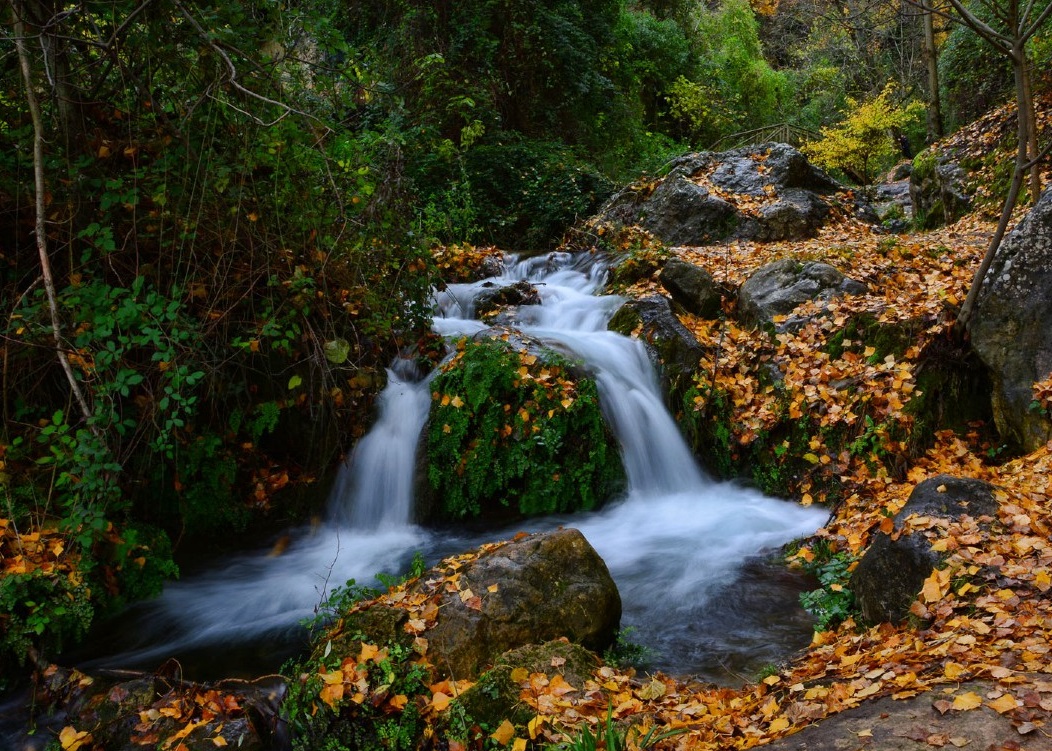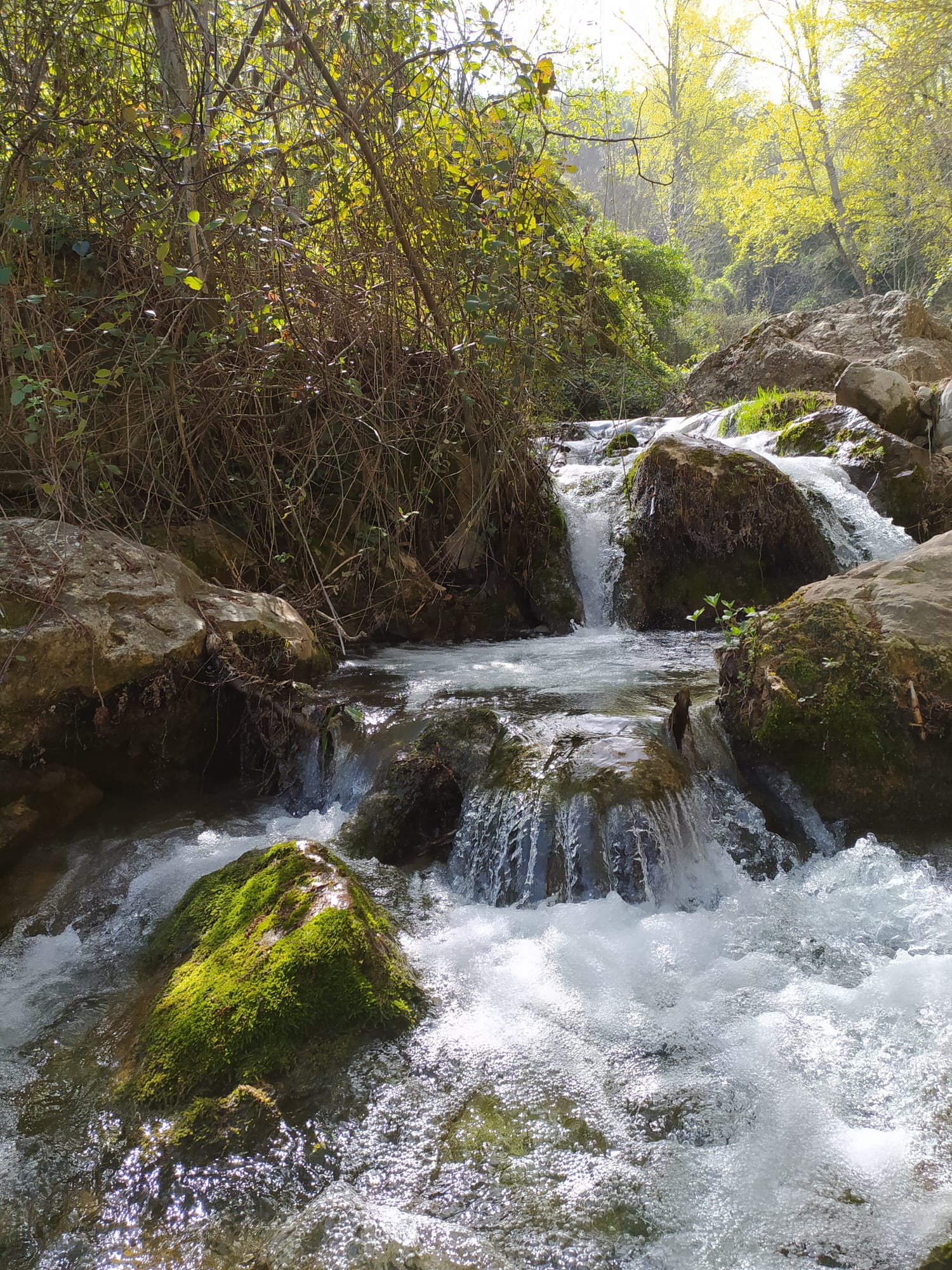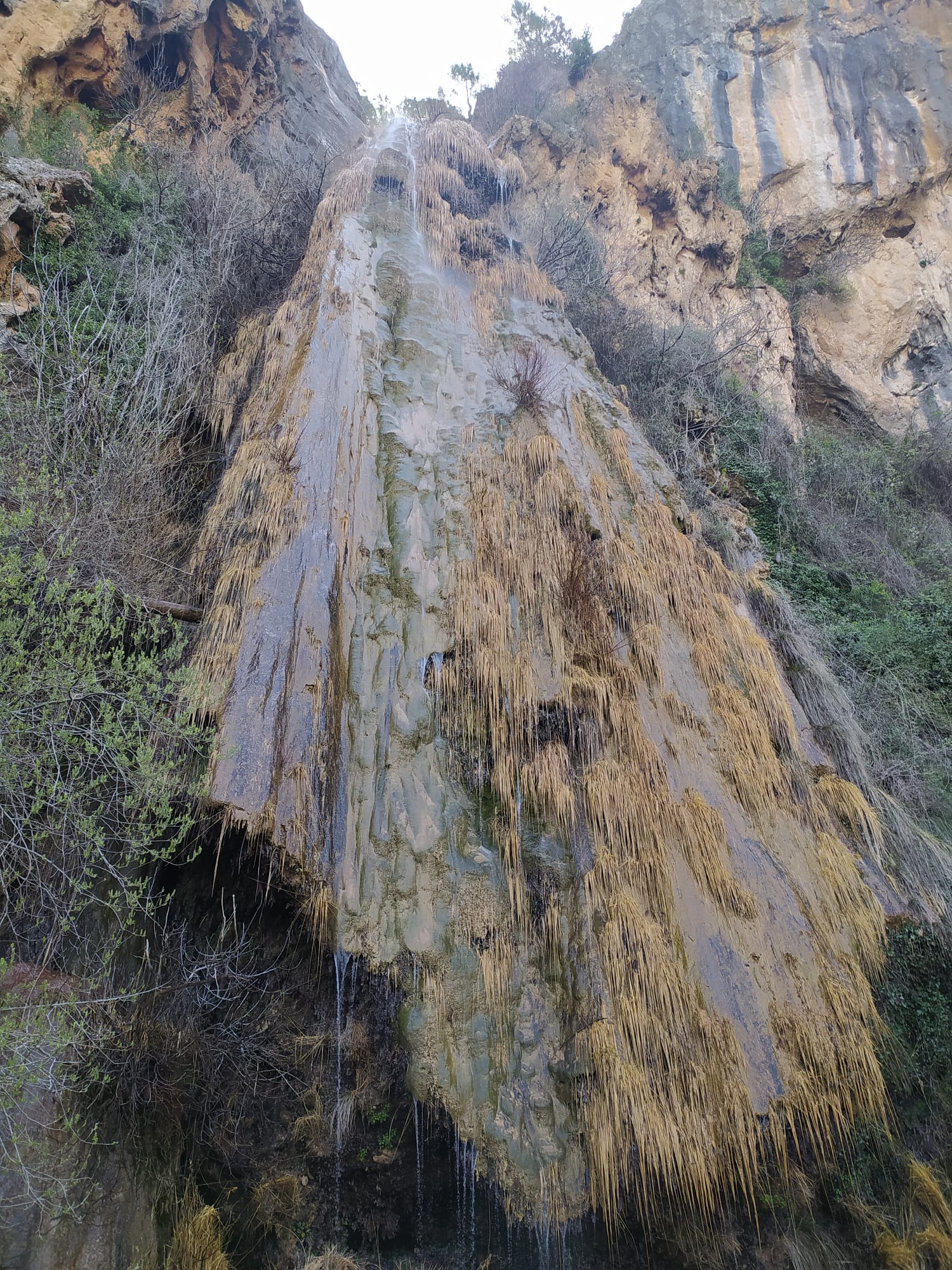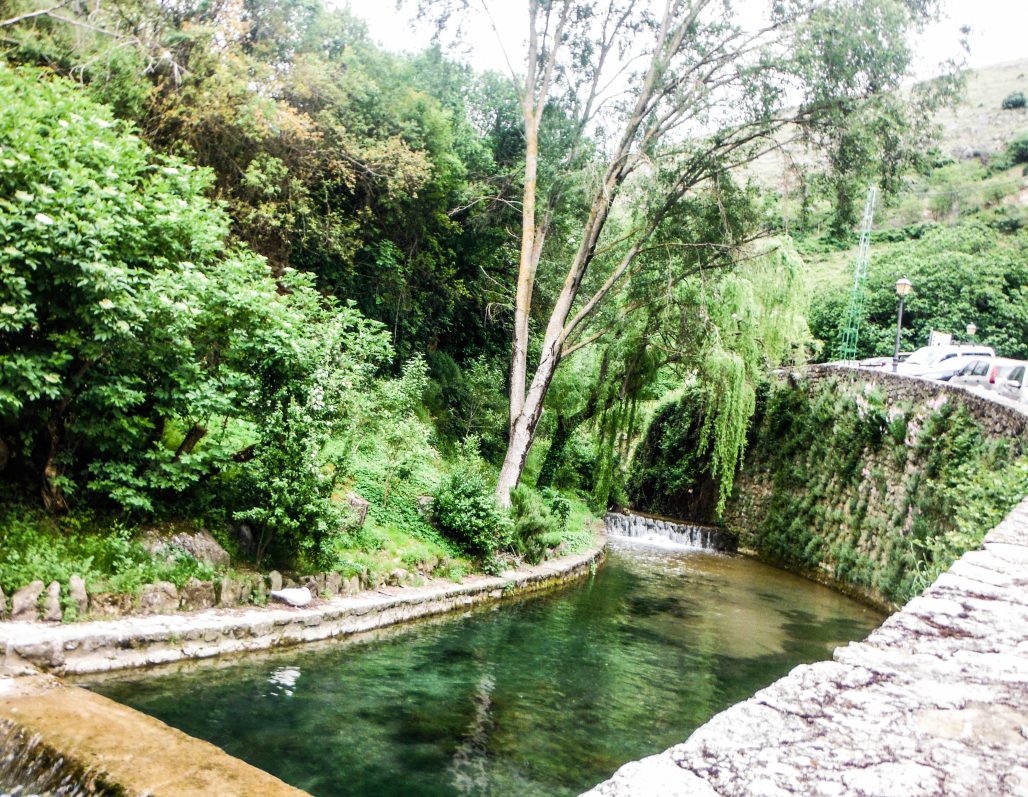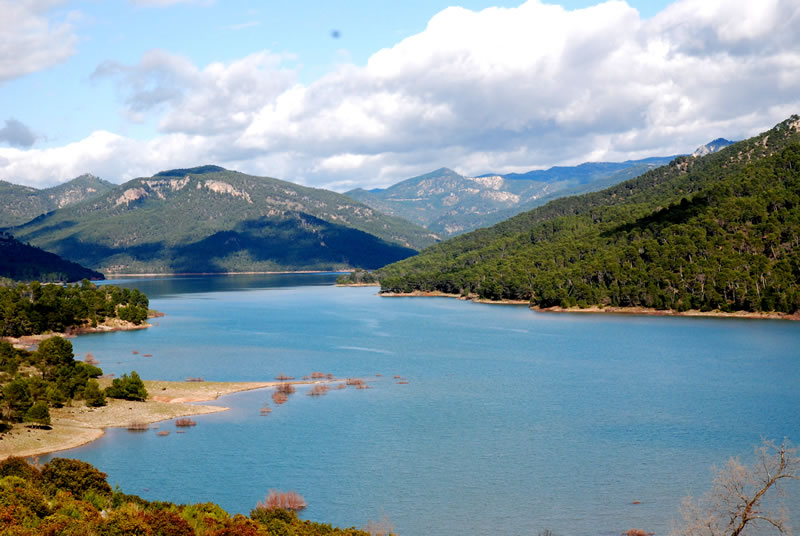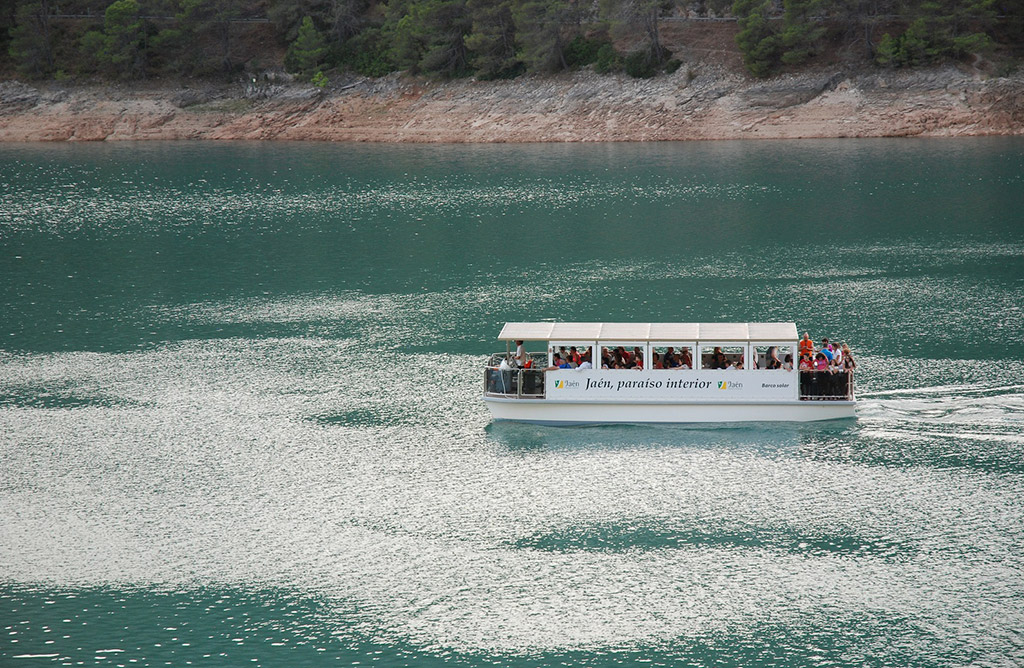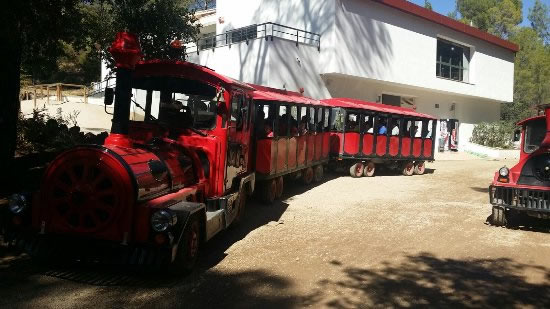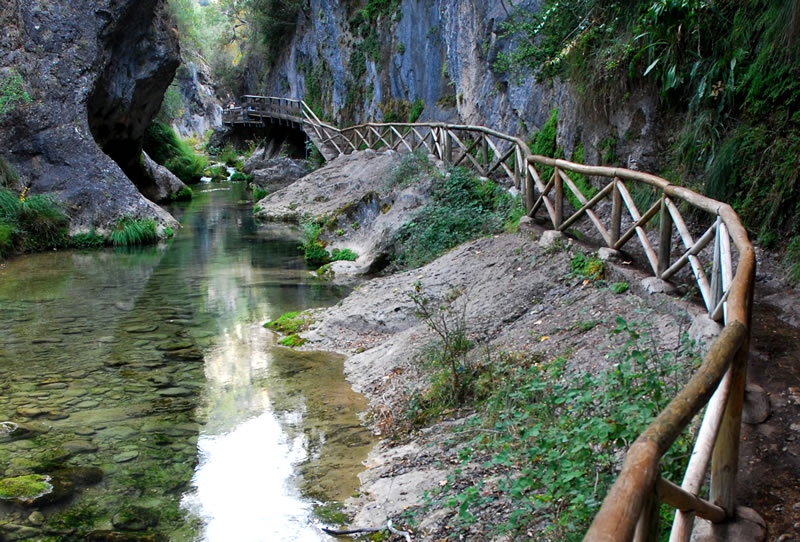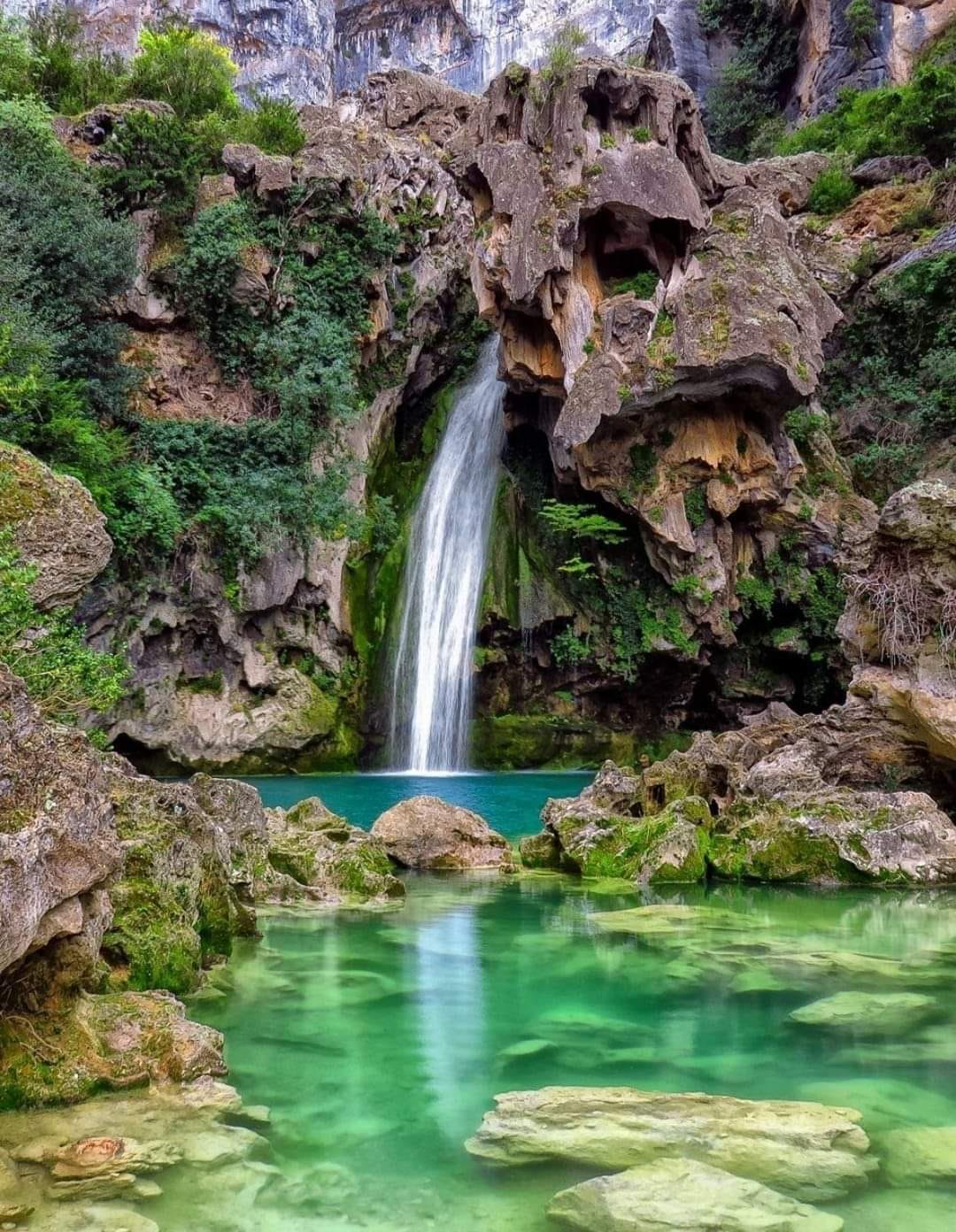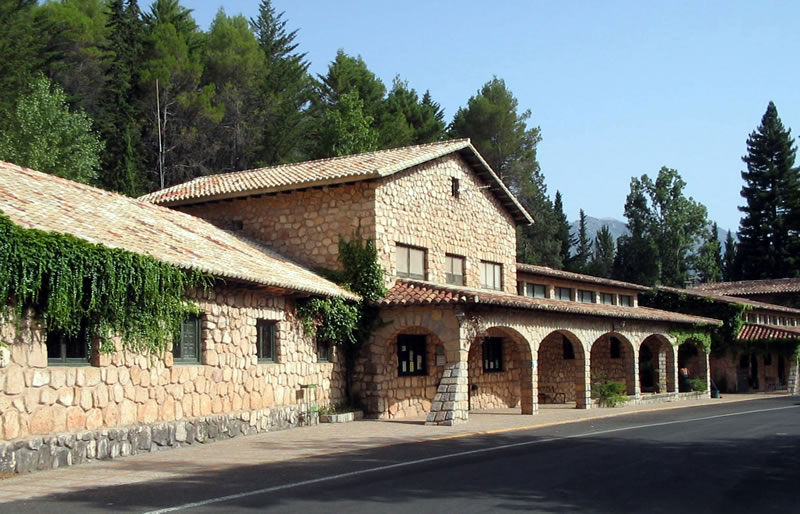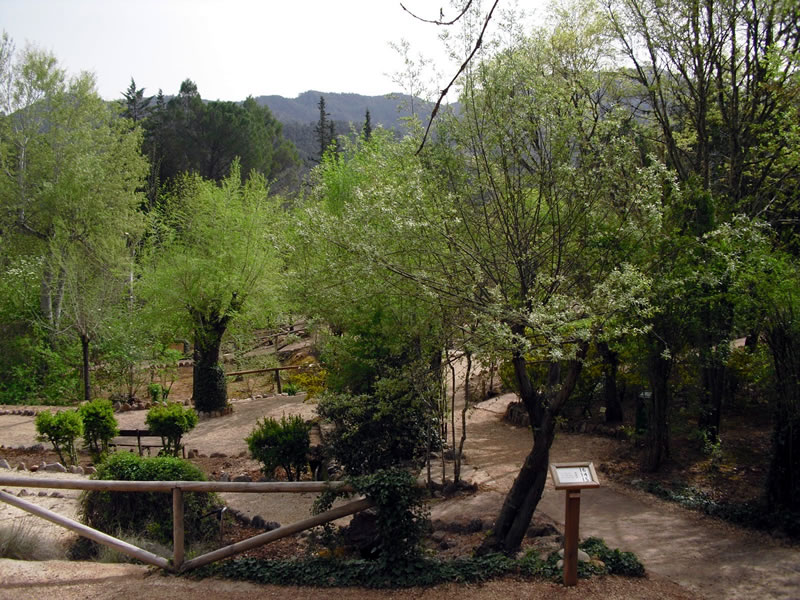Nature
Rural Houses in nature in Cazorla, Segura and Las Villas Natural Park, get to know the surroundings:

Nature
Water Cave
Part of Quesada’s natural heritage, a place where nature has created a place of spectacular beauty.
Known as the “Gruta de las maravillas” (Wonder Grotto) due to its interesting limestone formation, to its spectacular and deafening waterfalls during the ice melting season and to its whimsical stalactite formations.
The Blue Pylon
Impressive waterfall located in a corner of rocks between the villages of Belerda and Don Pedro.
It is a 10-meter waterfall that forms a pool of crystal-clear, blue waters, surrounded by lush vegetation. This is the end of the water cave, where the Tíscar river makes its way through the olive-growing countryside to merge its waters with the Ceal river and this with the Guadiana minor
Tisca Sanctuaryr
The “Virgen de Tíscar” Sanctuary is located in a unique natural enclave, surrounded by mountains and nature.
This is the place where the locals worship the Virgin of Tíscar, patron saint of Quesada.
We’ll find a Church and a square full of history. And on the highest rock: Tíscar Castle or Peña Negra (Black Ridge), where you can still see some remains of the old fortress.
Birth of the Guadalquivir River
Guadalquivir river’s source lies in Quesada’s municipality; humbly coming into existence between pines, ash, maple and hawthorn, to continue its journey through Andalusia and end up being one with the salty water in the Atlantic Ocean.
The name of the area is “Cañada de las Fuentes”, under a poem written by the Álvarez Quintero brothers, in the “Sierras de Cazorla, Segura y Las Villas” Natural Park.
A wonderful place to dive into nature and absorb the impressive landscape that the mountain range offers us.
Valley of the Ancient Yews
Unique corner of exceptional beauty where we find magnificent Yew specimens (Taxus Baccata), some of them over a thousand years old, making them the oldest Yews in Europe. There is a total of 16 specimens, one of them stands out for its trunk which exceeds nine meters in diameter.
You’ll find a marked route that will take you through its vegetation, ravines, rivers and mountains and finally, at the of the route, you’ll find the oldest yew in the area.
The “Chorro”
El Chorro is a place in the Sierra de Cazorla that’s known for its great views and landscapes.
One of the most impressive natural balconies in the area, where you can see Quesada in the distance and part of the mountains, you can even see the Linarejos waterfall between the cliffs.
Agrios Mountain Range
Set of summits that can be observed in the background from Quesada, the main ones are: Rayal (1834 meters), Navilla Alta or Picón del Guante (1,931 meters) and Cerro Villalta or Aguilón del Loco (1,956 meters).
Today, its ascent has become an attraction for mountaineering enthusiasts, and is known as the Route of the Abysses or Verticality Route, sour and hard.
“Pico Cabañas”
2018 meters high, located between the Quesada and El Pozo mountains, to the south of the Natural Park, becoming the highest peak of both mountain ranges.
A place of great ecological interest, because in its surroundings you can find Pinus Nigra pine groves, counting amongst its ranks with some of the oldest in Western Europe, close to a thousand years old; and large amounts of endemic plants.
La Bolera Reservoir
It is very close to Quesada. An attractive natural environment where water accumulates to form this reservoir, a place with great views and untouched nature; a place full of charm, where the Guadalentín river outlet creates a spectacular ravine.</p>
A perfect place to surround yourself with nature, enjoy the beauty of its landscapes and do all sorts of adventure activities!
“Cerrada del Utrero”
Quesada’s old town is the proof of all the stages that the town has gone through. There are Visigoth and Muslim remains.
You can visit the “Arco de los Santos” (Saints’ Arch), the old gateway to the walled village of Quesada; the “Manquita de Utrera” Arch, “Calle Adentro” street, St. Peter’s and St. Paul’s church, the Church of the Immaculate Conception or the former “Hospital de Pobres” (Poor People’s Hospital), the “Barrio de la Lonja” neighborhood and the poetry corner.
Cerezuelo River
River that runs through Cazorla and has been the central axis of the life of its inhabitants.
It is one of the most beautiful corners of the area, offering spectacular landscapes. It is traveled through a route that walks along the course of the river, contemplating its pools and waterfalls; and crossing different wooden bridges. If it is completed, it passes through the Malena waterfall and culminates in the Yedra Castle.
Tranco Reservoir
One of the largest reservoirs in Spain, located in the upper Guadalquivir and the centre of the “Sierras de Cazorla, Segura y Las Villas” Natural Park.
Surrounded by forests and mountains you can enjoy a river cruise on the solar boat that flows through its waters.
Collado del Almendral Wildlife Park
Hunting park with the purpose of preserving the fauna of the Natural Park.
Guided tours are carried out on a charming tourist train, about 5 kilometres is the distance you’ll travel. You can see different animals in semi-freedom, such as fallow, deer, mountain goats, mouflons … among spectacular natural scenery.
Borosa River
One of the best-known areas and hiking trails the “Sierra de Cazorla”.
The Borosa River is one of the Guadalquivir River’s main affluents, its source being in the “Aguas Negras” (Black Waters) lagoon and discovering amazing places such as “Cerrada de Elías” (Elías’ Close) or the “Salto de los Organs” (Jump of the Organs), ending in the Aldeazores Lagoon,
Platforms that rise above the water, emerald green pine forests and crystal-clear waters, spectacular geological formations, impressive water plunges and tunnels that run under the rocky mountains.
“Vinagre” Tower
The visitors centre of the “Torre del Vinagre” is a vast window through which we can take a look at the natural park and get valuable information about everything that it offers us.
Its privileged enclave, right in the middle of the Guadalquivir valley, allows you to enjoy one of the most emblematic locations in the area and to get to know all about all the different environments and sceneries that are found in these mountains.
Inside the building you will find an exhibition that shows the different species of the natural space, such as deer, mouflons, fallow…
You can also visit the botanical garden and its large sample of forests and vegetation, containing a vast amount of all the species present in the Park.

